This document (V20180713) provides guidelines to review artifacts. It gradually evolves to define common evaluation criteria based on our past Artifact Evaluations, ACM reviewing and badging policy (which we co-authored in 2016), and your feedback from past AE (2018 2017a, 2017b, 2014).
Reviewing process
After an artifact submission deadline specific to a given event, AE reviewers will bid on artifacts they would like to review based on a provided artifact abstract and check-list, their competencies, and access to specific hardware and software, while avoiding possible conflicts of interest. Within a few days, AE chairs will make the final reviewer selection to ensure at least three or more reviewers per artifact.Reviewers will then have approximately 2..3 weeks to evaluate artifacts and provide a report using a dedicated artifact submission website (usually EasyChair or HotCRP). Reviewers will be also allowed to communicate with authors about encountered issues continuously nd anonymously via submission website in order to quickly resolve issues (our point is not to fail problematic artifacts but to help authors improve at least publicly available ones and pass evaluation).
If AE has a rebuttal phase (technical clarification phase), authors will be able to respond to the final evaluation. However, we expect that most of the issues will be already resolved with reviewers during direct communication. AE chairs will then decide on a set of badges to award (see below) based on all reviews and authors responses.
Artifact evaluation
Reviewers will need to read a paper and then thoroughly go through authors' artifact appendix step-by-step to evaluate a given artifact and then describe their experience at each stage (success or failure, encountered problems and how they were possibly solved, and questions or suggestions to the authors), and then give a score on scale -1 .. +1 where
+1) exceeded expectations
0) met expectations (or inapplicable)
-1) fell below expectations
| Criteria | Score | Badges for ACM conferences, workshops and journals (CGO,PPoPP,SC,PACT'18,ReQuEST-ASPLOS'18) |
Badges for non-ACM events (PACT'16,PACT'17,MLSys'19) |
|
| Artifacts available? |
Are all artifacts related to this paper publicly available?
Note that it is not obligatory to make artifacts publicly available! |
The author-created artifacts relevant to this paper
will receive an ACM "artifact available" badge
only if they have been placed on
a publicly accessible archival repository
such as Zenodo,
FigShare,
Dryad
or ACM DL.
A DOI will be then assigned to their artifacts
and must be provided in the Artifact Appendix!
The only exception is when authors decide to share their artifacts via ACM DL which does not yet have an automated submission service - in such case authors just need to mention in their Artifact Appendix that they will make their artifacts available in the ACM DL (see example from the 1st ACM ReQuEST-ASPLOS'18 tournament).
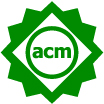 Notes: ACM does not mandate the use of above repositories. Publisher repositories, nstitutional repositories, or open commercial repositories are acceptable only if they have a declared plan to enable permanent accessibility! Personal web pages, GitHub, GitLab and BitBucket are not acceptable for this purpose. Artifacts do not need to have been formally evaluated in order for an article to receive this badge. In addition, they need not be complete in the sense described above. They simply need to be relevant to the study and add value beyond the text in the article. Such artifacts could be something as simple as the data from which the figures are drawn, or as complex as a complete software system under study. |
||
| Artifacts functional? | Package complete? |
All components relevant to evaluation are included in the package?
Note that proprietary artifacts need not be included. If they are required to exercise the package then this should be documented, along with instructions on how to obtain them. Proxies for proprietary data should be included so as to demonstrate the analysis. |
The artifacts associated with the paper will receive an "Artifacts Evaluated
- Functional" badge only if they are found to be documented, consistent,
complete, exercisable, and include appropriate evidence of verification and
validation.
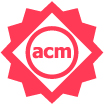 |
|
| Well documented? | Enough to understand, install and evaluate artifact? | |||
| Exercisable? | Includes scripts and/or software to perform appropriate experiments and generate results? | |||
| Consistent? | Artifacts are relevant to the associated paper and contribute in some inherent way to the generation of its main results? | |||
| Artifacts customizable and reusable? |
Can other users easily reuse and customize this artifact and experimental workflow? For example, can it be used on a different platform, with different benchmarks, data sets, compilers, tools, under different conditions and parameters, etc.? We collaborate with ACM and ReQuEST to unify packing and sharing of artifacts as reusable and customizable components using Collective Knowledge framework (see ACM announcement, ReQuEST report and ResCuE-HPC'18 workshop). Note that authors are not obliged to use CK and can use any other suitable workflow framework to receive this badge. |
The artifacts associated with the paper will receive an "Artifact Evaluated - Reusable" badge
only if they are of a quality that significantly exceeds minimal functionality.
That is, they have all the qualities of the Artifacts Evaluated - Functional level,
but, in addition, they are very carefully documented and well-structured to the extent
that reuse and repurposing is facilitated. In particular, norms and standards of the research
community for artifacts of this type are strictly adhered to.
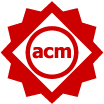 |
||
| Results validated? |
Can all main results from the paper be validated using provided artifacts?
Report any unexpected artifact behavior (depends on the type of artifact such as unexpected output, scalability issues, crashes, performance variation, etc). |
The artifacts associated with the paper will receive a
"Results replicated" badge only if the main results
of the paper have been obtained in a subsequent study
by a person or team other than the authors, using,
in part, artifacts provided by the author.
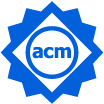 Note that variation of empirical and numerical results is tolerated. In fact it is often unavoidable in computer systems research - see "how to report and compare empirical results" in AE FAQ! Since it may take months to reproduce some complex artifacts (for example to perform full training of a deep learning model), we now discuss a staged AE where we will first validate that artifacts are functional before camera ready paper, and then use a separate AE with full validation of all results based on ACM ReQuEST tournament methodology without strict deadlines. We plan to validate this approach at MLSys'19. |
||
| Artifact evaluated? |
Did artifacts and results match authors' description?
|
Artifacts successfully passed evaluation receive a stamp of approval:
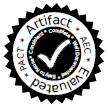 |
||
| Workflow framework used? | Was any workflow framework such as Collective Knowledge used to implement experimental workflow? | Artifact can receive a special prize if arranged by the event. | ||
| Distinguished artifact? | Is artifact publicly available, functional, reproducible and easily customizable and reusable? | Artifact can receive distinguished artifact award if arranged by the event. | ||
Methodology archive
We keep track of the past submission and reviewing methodology to let readers understand which one was used in the papers with the evaluated artifacts.- V20180713 (CGO'19/PPoPP'19/PACT'18/IA3'18/ReQuEST'18): LaTeX template, submission guide, reviewing guide
- V20171101 (CGO'18/PPoPP'18): LaTeX template, submission guide, reviewing guide
- V20161020 (PACT'17): LaTeX template, submission guide, reviewing guide
- V20161020 (PPoPP'17/CGO'17): LaTeX template, submission guide, reviewing guide
- V20160509 (PACT'16): LaTeX template, submission guide, reviewing guide
- V20151015 (PPoPP'16/CGO'16/ADAPT'16): LaTeX template, submission guide, reviewing guide